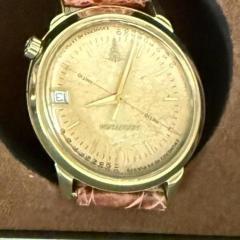Rolex condensation issues - Help
-
Recently Browsing
- No registered users viewing this page.
-
Topics
-
Posts
-
my understanding is message boards don't really use much space at all if they're basically just text. as why their websites out there that will give you free message boards of course they control the advertising but they're just text based I thought the message board already was backed up in fact was backed up multiple times? One of the things that is a real killer for message boards is file attachments. As people get faster computers they think nothing of attaching big files. Then we get a lot of big files reattached multiple times a somebody new post the question we will post things again and again and I mentioned there's a heck of a lot of file duplication it be nice to figure out some place to put all the files and not have them on the message board at all. then? The last time I checked Facebook maybe I wasn't paying attention to something? So I just now checked his Facebook watch repair group he was last seen on the 14th and I just don't remember this picture? Maybe could that be what's distracting him? although he is on the Facebook group may be just doesn't like us anymore?
-
By RichardHarris123 · Posted
Sorry I don't know much about clocks and this post seams to have been overlooked. Hopefully someone will pick it up now. -
I 'll remember my university days... Thank you very much!
-
I’m fairly new to this and have worked on maybe 30 or so vintage and new movements. I recently went through a NH35 movement that I picked up with low amplitude. 140-150 degrees and impossible to regulate. I did find that the train bridge was not flat and when the screw nearest the barrel was tightened the wheels no longer spun freely so I replaced that with a spare and all good. I cleaned it and lubricated it, including the balance cap jewels and it came right up at 220. I could get the beat error down below 0.5 but I’m chasing the rate all over. It will be down -15 and I’ll just touch the regulator arm and it will be up +15. This is a practice movement for me as I want to learn and improve making positional error corrections on the Etachron system. The amplitude has fallen off a bit as well, 200. I’ll let it run overnight but is there anything I’m missing that can cause the rate to change so significantly with a very very small movement of the regulator? Could the hairspring be damaged and very particular to both the regulator and stud position? Could the regulator pin positions off? Either too open or closed?
-






Recommended Posts
Join the conversation
You can post now and register later. If you have an account, sign in now to post with your account.
Note: Your post will require moderator approval before it will be visible.